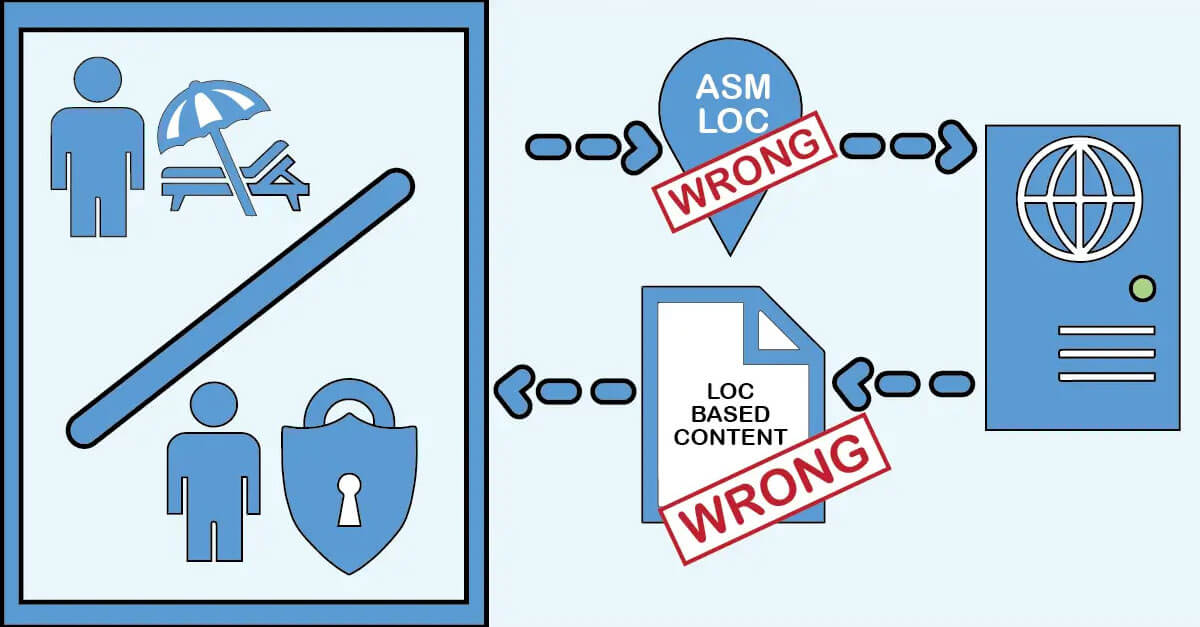In the realm of modern web development, personalization has emerged as a powerful tool to enhance user experiences and engagement. Tailoring content to match individual preferences and needs can significantly improve a website’s effectiveness. However, like any tool, personalization must be used judiciously and thoughtfully. One area that demands careful consideration is the localization of content based on user IP detection – an approach that can often lead to misguided outcomes and unfavorable user experiences.
The Temptation of IP-Based Content Localization
It’s not uncommon for clients to express a desire to utilize personalization techniques to dynamically alter the language or content of a webpage based on the user’s detected location. The intention behind such a strategy is laudable – after all, speaking to users in their native language or presenting them with content relevant to their geographical area seems like an ideal way to connect.
However, the road to effective personalization is riddled with pitfalls, and one of the most significant lies in the notion of IP-based content localization. The conventional approach involves detecting a user’s IP address and then using this information to either automatically translate the content or redirect the user to a localized version of the page. While this might seem like a convenient solution, it carries inherent risks and limitations that can compromise the user experience and even harm a website’s SEO.
The Pitfalls of IP-Based Localization
One glaring flaw in the IP-based content localization strategy is its vulnerability to the widespread use of VPNs (Virtual Private Networks). VPNs allow users to mask their actual location and appear as if they are accessing the internet from a different geographic region. Even when not on a VPN individuals often find themselves with downtime during the holidays or while on vacation which increases the likelihood they will be visiting your site from location other than their home. Consequently, relying solely on IP detection can lead to incorrect assumptions about a user’s location and preferences.
Furthermore, the assumption that users within a specific geographic region share the same language or preferences is a fallacy. In today’s globalized world, individuals relocate, travel, and explore opportunities across borders. Job seekers, for instance, might be looking for positions in regions where they are not currently located. Automatically translating content based on an IP address might lead to confusion and make it harder for users to find the information they’re seeking.
Embracing Purposeful Personalization
To address these shortcomings and maintain a user-centric approach, a more strategic approach to personalization is necessary. Rather than altering the main body content of a page based on location, personalization should focus on enhancing the user’s connection with the site and guiding them to relevant content.
For instance, personalizing minor elements like displaying images of the local office or providing targeted calls to action can foster a sense of connection. Users can be directed to pages with localized information, but the main content should remain consistent and accessible to everyone. This approach acknowledges the diverse nature of today’s users and respects their freedom to access content that might be relevant to their aspirations rather than their current location.
Using site interactions, to gain insights on your user’s actual needs vs. assuming them based on location, will help reach the intended audience faster. So, if they check out content on your site that was related to Iceland you could have a personalized call to action change out from being about company benefits to reading about your company retreat to Reykjavik.
When it comes to speaking to users in their native language, we always want to separate this idea from presenting them with content relevant to their geographical area. Changing the language should be a one to one translate of the page they are on when possible and should not change the content information. Allowing the user to choose the language instead of assuming and changing it for them is best. Along with having localized content as separate pages instead of dynamically changing the content of your page will help users find that content that is most relevant to them as well as for them to find it again later and will allow search engines to rank your pages better.
Educating Clients for Sustainable Personalization
As a development and design community, it is our responsibility to educate clients about the intricacies and implications of personalization. While it may be tempting to cater to immediate demands, a long-term perspective is essential. Providing insights into the potential downsides of IP-based content localization, including the challenges posed by VPNs and diverse user backgrounds, can help clients make informed decisions that align with their goals for user engagement and satisfaction.
In lieu of automatically translating or changing content based on IP addresses, the recommendation is to incorporate visible callouts or options on the website that guide users to specific localized content and having only translating the content not altering the content. This empowers users to explore content relevant to their desired location in the language they prefer without making assumptions about their current whereabouts.
Conclusion
The allure of personalization should not overshadow its potential downsides. IP-based content localization, while theoretically appealing, can lead to inaccuracies and an unfavorable user experience. In a world where individuals traverse borders and employ tools like VPNs, personalization should be implemented thoughtfully, with a focus on enhancing connection and directing users to relevant content without compromising accessibility. By educating clients about the nuances of personalization, we can collectively work towards crafting user experiences that are both engaging and inclusive.
